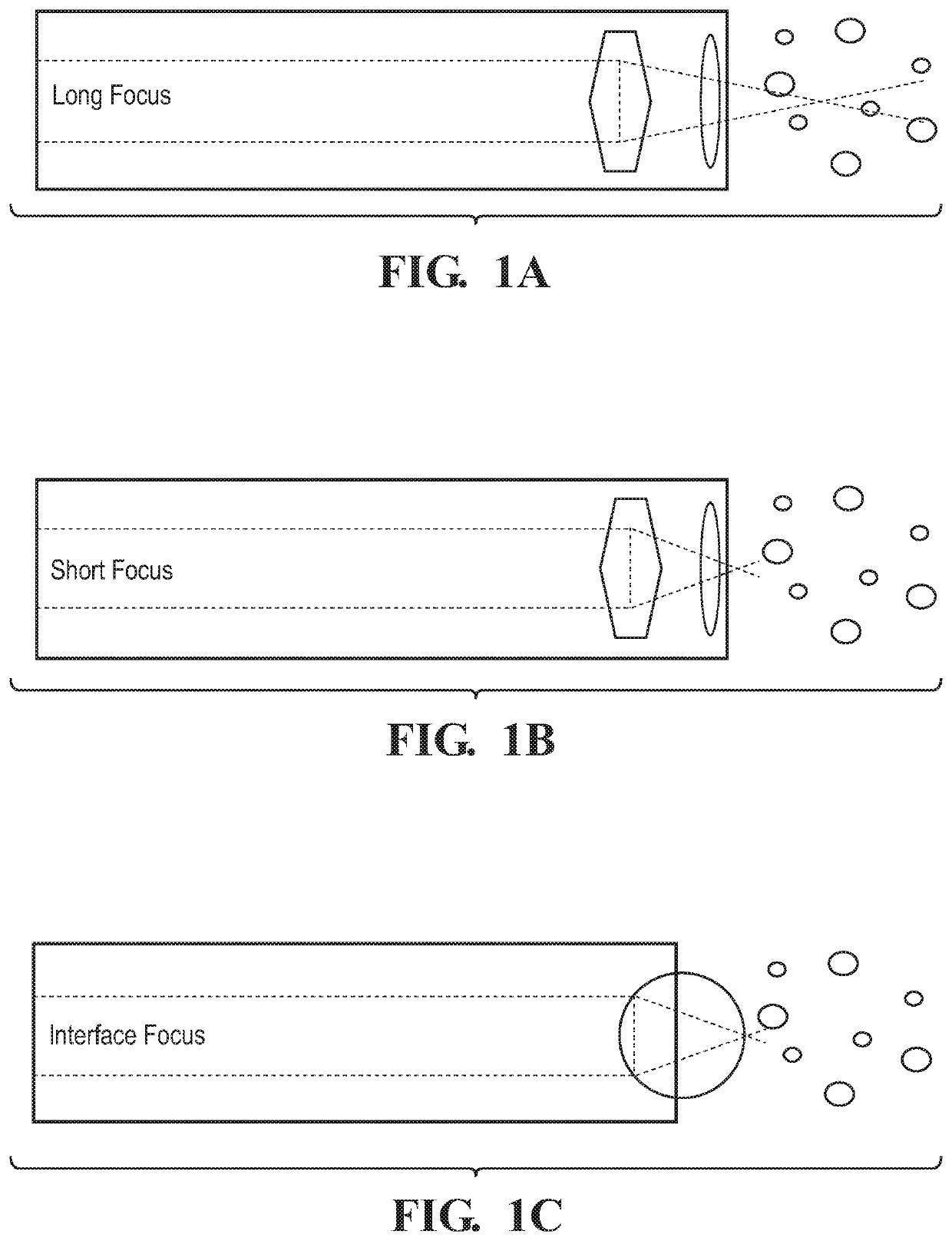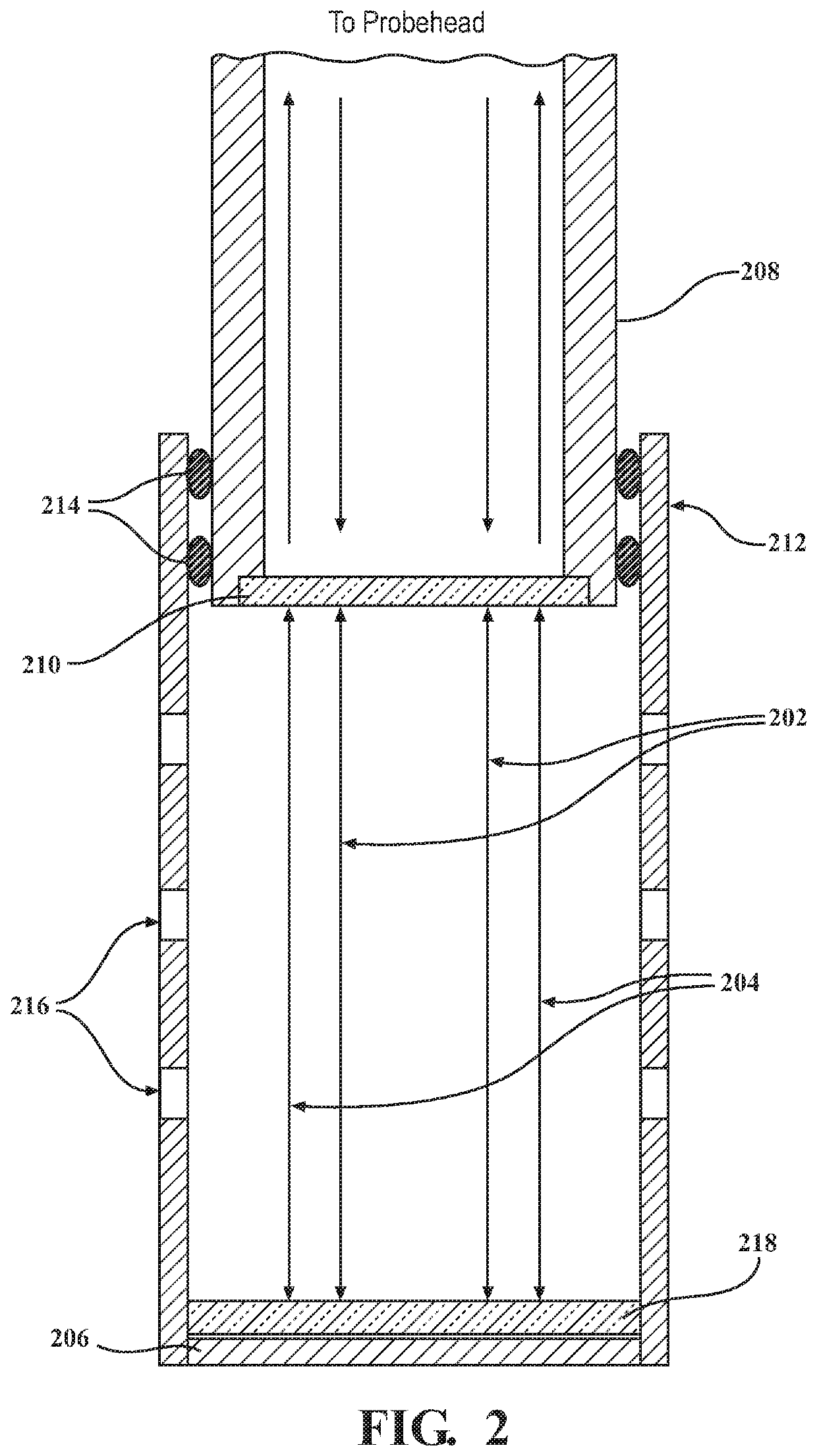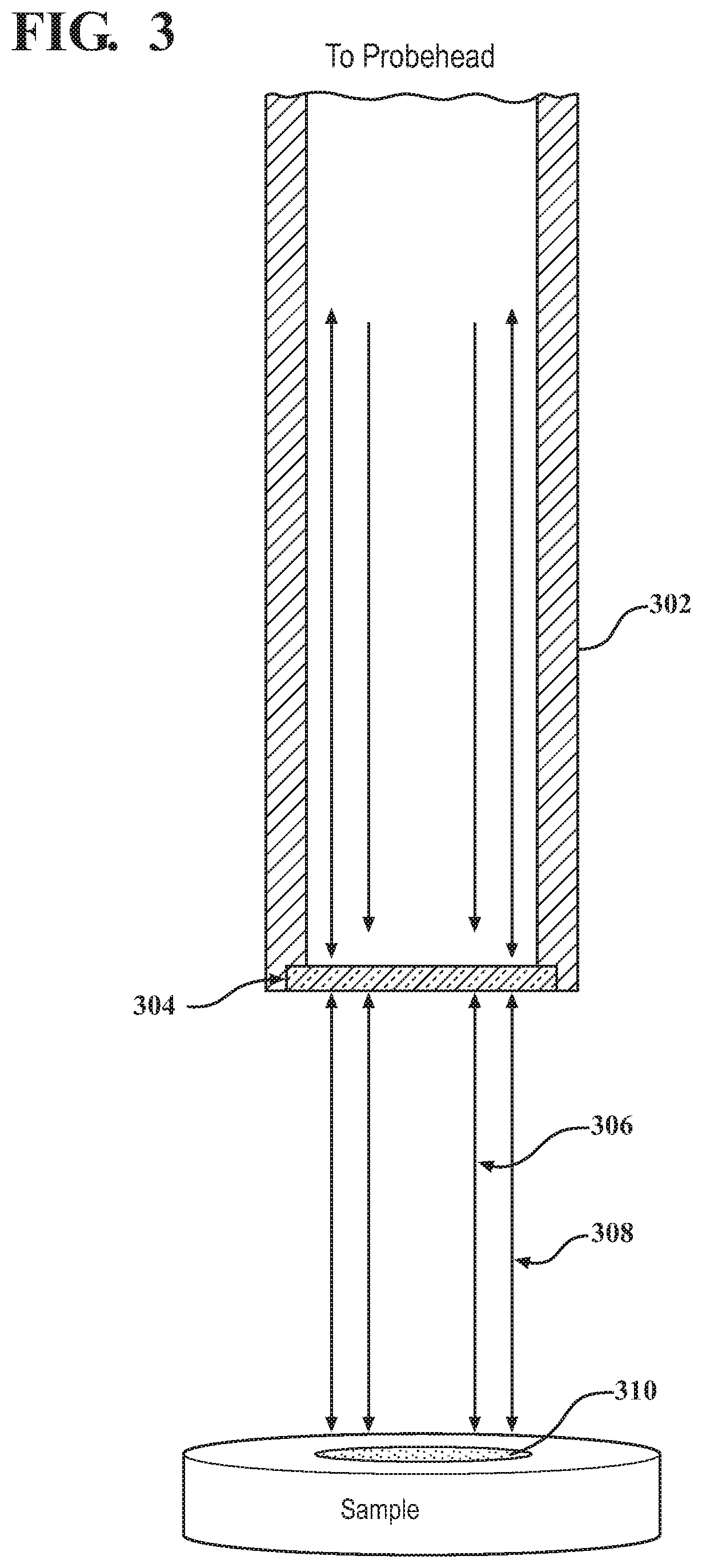Raman immersion probe systems and methods
a technology of immersion probes and probes, applied in the field oframan spectroscopy, can solve the problems of interfering with the raman signal from the sample, slurries and solids, and laser safety is also an issue, so as to facilitate the path length adjustment and minimize cross-contamination
- Summary
- Abstract
- Description
- Claims
- Application Information
AI Technical Summary
Benefits of technology
Problems solved by technology
Method used
Image
Examples
Embodiment Construction
[0019]In broad and general terms, the immersion Raman probes disclosed herein use collimated light as opposed to a diverging fiber bundle or lens-based focusing geometry to deliver and collect light to and from a sample. This approach eliminates problems associated with chromatic aberrations generated using a single lens design. Chromatic aberrations generated by a single lens create a different focal point for different wavelengths within the sample. The laser wavelength is collected at its focal point, while longer Raman wavelengths collected at this focal point will experience divergence when leaving the same lens operating as the collection lens. Raman scattered light collected at its own focal point will be lower in intensity but will be collimated as it leaves the collection lens. To avoid chromatic blur within the sample it is important to have the same focal point for the laser and the complete range of Raman wavelengths effectively keeping the collection efficiency and path...
PUM
| Property | Measurement | Unit |
|---|---|---|
| output powers | aaaaa | aaaaa |
| Raman immersion probe | aaaaa | aaaaa |
| volume | aaaaa | aaaaa |
Abstract
Description
Claims
Application Information
 Login to View More
Login to View More - R&D
- Intellectual Property
- Life Sciences
- Materials
- Tech Scout
- Unparalleled Data Quality
- Higher Quality Content
- 60% Fewer Hallucinations
Browse by: Latest US Patents, China's latest patents, Technical Efficacy Thesaurus, Application Domain, Technology Topic, Popular Technical Reports.
© 2025 PatSnap. All rights reserved.Legal|Privacy policy|Modern Slavery Act Transparency Statement|Sitemap|About US| Contact US: help@patsnap.com



